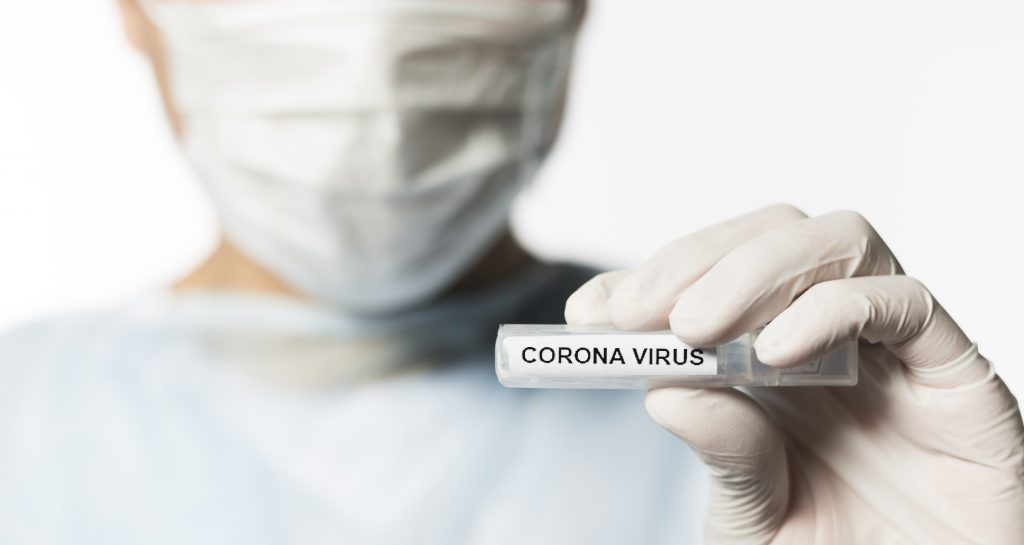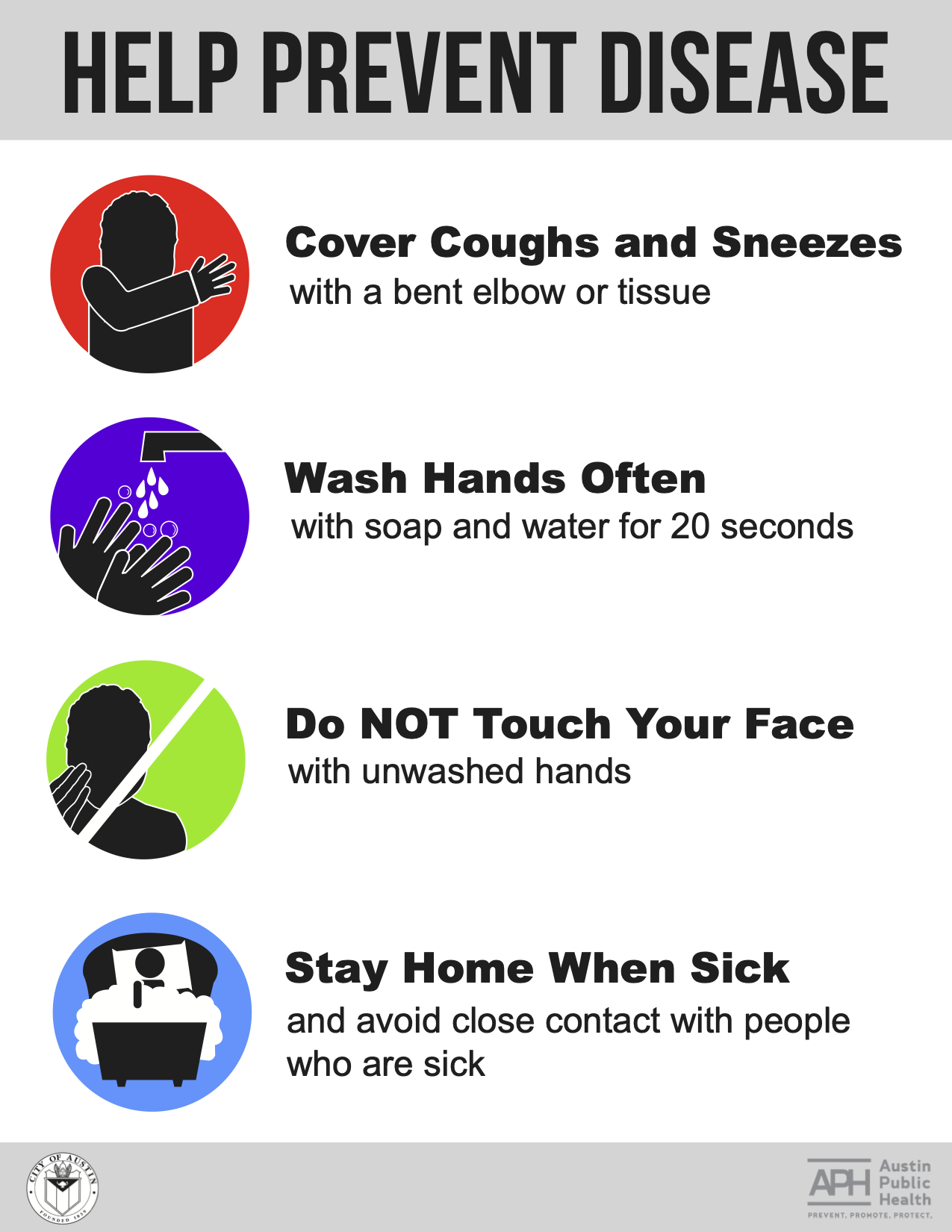As you are all aware the spread of novel coronavirus, causing the infectious disease known as COVID-19, has dominated the news, and based on conversations with many of you, it is the dominating topic on your minds also. The first case can be tracked back to November 17 in Wuhan, China. Since that time, it has spread worldwide with the World Health Organization recently classifying the outbreak as a pandemic, and the leaders of our state and country formally declaring “states of emergency”. According to John Hopkins University tracker, as of March 16, 2020, 3813 cases have been identified in the US. There have been 68 confirmed cases in Texas and 6 confirmed cases in Austin.
Despite the media coverage, this is not a time to panic. It is important that we all make well-informed and thoughtful decisions about how we care for ourselves, those closest to us and our community.
SYMTOMS
The most common symptoms of COVID-19 are fever, cough and shortness of breath. Many people experience only a minor illness. Typically, there are no upper respiratory symptoms such as nasal congestion or runny nose. The average time from exposure to first symptoms is 5 days, but symptoms can appear anywhere from 2 to 14 days after exposure.
HOW DOES IT SPREAD
It is most often spread through:
- Respiratory droplets released into the air by coughing and sneezing.
- Close personal contact, such as touching or shaking hands.
- Touching an object or surface with the virus on it, then touching your mouth, nose, or eyes before washing your hands.
PREVENTION
The following are common sense things that we can do to help prevent further spread of this and to protect ourselves and those around us who may be more vulnerable then we might be.
 Wash hand frequently with soap and water for at least 20 seconds. If soap and water are not available, use alcohol-based hand sanitizer. In medicine we are taught to use crossing a threshold (when entering or leaving a room) as a reminder to wash your hands. You can work to do the same; upon entering or leaving a building, getting in or out of the car, on or off the elevator, or entering or leaving a restaurant. With the run on the supermarkets, hand sanitizer can be hard to come by so here is a recipe to make your own.
Wash hand frequently with soap and water for at least 20 seconds. If soap and water are not available, use alcohol-based hand sanitizer. In medicine we are taught to use crossing a threshold (when entering or leaving a room) as a reminder to wash your hands. You can work to do the same; upon entering or leaving a building, getting in or out of the car, on or off the elevator, or entering or leaving a restaurant. With the run on the supermarkets, hand sanitizer can be hard to come by so here is a recipe to make your own.- Avoid touching your eyes, nose, and mouth with unwashed hands. Avoid close contact with people who are sick.
- Stay home when you are feeling sick.
- Cover your coughs and sneezes with a bent elbow or tissue.
- Clean and disinfect frequently touched objects and surfaces daily.
- Don’t shake hands.( Here are some alternatives.)
- Practice social distancing outside your home and avoid crowds of people in enclosed spaces.
- You can enhance your immunity with good nutrition, plenty of rest, staying hydrated and through exercise (preferably outdoors!).
We are monitoring recommendations from Austin Public Health and the CDC, which are changing daily. As of today, there is limited availability of test kits in Austin and we are unable to test in the office. Since COVID-19 is not an equal opportunity threat and has greater impact on vulnerable populations like the elderly, those with suppressed immune systems, and chronic diseases, current testing is targeted toward these patients. Baylor Scott and White has opened 2 drive through testing centers. There is a free questionnaire on the MyBSWHealth app, which screens patients who feel they may have COVID-19 directing them to a virtual physician visit and to one of their drive-through testing locations if appropriate.
Other things to obviously consider in testing is symptoms of fever, cough and shortness of breath, travel to a geographically affected area within 14 days, and known contact with someone with confirmed COVID-19.
WHAT TO DO IF YOU FEEL SICK
When you call for a sick visit appointment, if appropriate, we will attempt to take care of the issue though tele-medicine. If you need to be seen we will schedule to see you in the office or in another setting that may be more appropriate and better equipped for the situation. As always we are here to do whatever we can to provide the best health care possible for all of our patients.
In good health,
Kerry Rhodes, MD


